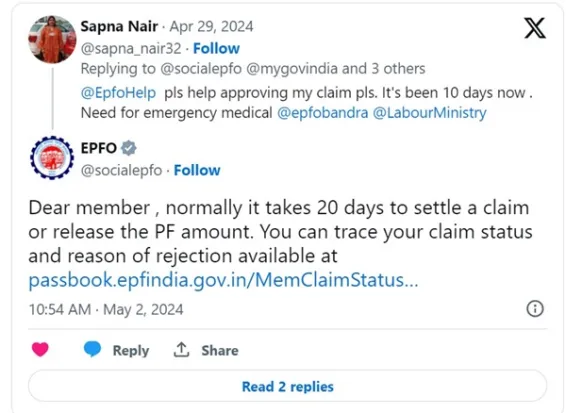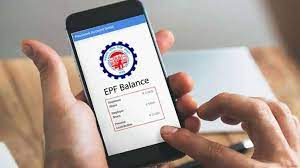While the EPF’s main goal is to provide social security to employees during the post-retirement years, the EPFO allows withdrawal of amount partially or fully, depending on situations.
The Employees’ Provident Fund Organisation (EPFO) allows an employee to contribute a certain percentage of the basic salary towards provident fund. As per EPFO norms, the employee has to contribute 12% of his basic pay, which is equally matched by his employer, towards the EPF account. Of the employer’s 12% contribution, 8.33% goes towards employees’ pension scheme (EPS) and 3.67% towards provident fund. On the other hand, the employee’s entire contribution of 12% goes to provident fund.
Read More: EPFO Update: How To Check PF Balance In 4 Easy Ways, Details Here
While the EPF’s main goal is to provide social security to employees during the post-retirement years, the EPFO allows withdrawal of amount partially or fully, depending on situations, before retirement also. For instance, a person who has lost his job is allowed to withdraw 100% of his EPF corpus, provided he has not joined a new company and completed 60 days of unemployment. In this case, the person needs to fill and submit Form 19 with the EPFO for the final settlement of his EPF account. Similarly, the EPFO allows a person, who is actively in job, to withdraw up to 75% of his accumulated PF corpus, with certain conditions.
How many days does it take for an employee’s provident fund claim to process? Here’s what EPFO says
According to the EPFO, it takes around 20 days to process the EPF claim and transfer the amount to the applicant.

If the applicant doesn’t receive the amount within the timeframe mentioned, the subscriber can go to the regional PF commissioner to report the matter. He or she can also file a complaint on EPFO’s official website regarding this.
EPF subscribers may submit withdrawal or transfer claims either online or offline. Members are allowed to check the EPF claim status online regardless of the method opted to file the application. The easiest way to check the claim status is by logging into the UAN portal or by visiting the EPFO’s official website.
Eligibility:
- 100% of the EPF corpus can be claimed on retirement. Early retirement does not qualify a member for claiming the full corpus.
- In the event of unemployment, members are allowed to claim 75% of the amount in his or EPF account.
- EPFO allows 100% withdrawal of the EPF deposit after two months of unemployment.
Read More: EPF: How to create Rs 1.30 crore tax-free corpus starting with basic salary of Rs 20,000
How to check EPF claim status online:
Members are allowed to check EPFO claim status through any of the following ways given below:
- UAN Member Portal
- EPF Website
- Umang App
EPFO Claim – FAQs:
Q. What are the claim forms that can be filed from the UAN-member interface directly by the employee?
Ans. Member can apply for:
a. PF Final Settlement (Form19),
b. Pension Withdrawal Benefit (Form10-C) and
c. PF Part Withdrawal (Form31) from the Member Interface directly
Q. What are the requirements from the member to be for filing online claims?
Ans. Member should fulfil following conditions:
a. The member should have activated his/her Universal Account Number (UAN) and the mobile number used for activating UAN should be in the working condition.
b. Member’s AADHAAR details should be seeded in EPFO database and he should avail OTP based facility for verifying eKYC from UIDAI while submitting the claim.
c. Member’s Bank Account along with IFSC code should be seeded in EPFO database.
d. Permanent Account Number (PAN) should be seeded in EPFO database for PF Final Settlement Claims in case his/her service is less than 5 years.
Q. What are the service requirements for online filing of PF Final Settlement Claims (Form-19)?
Ans. Member should fulfil following service conditions:
a. Date of Joining and Date of Exit of Member should be available in the EPFO Database.
b. Member should not be working presently under any establishment coverable under PF Act.
c. The Claim should be submitted not before two months after leaving establishment.





































